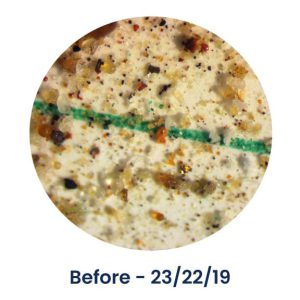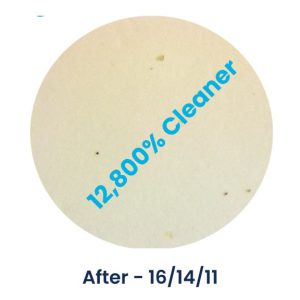When it comes to commissioning and startup of turbomachinery or industrial hydraulic systems, there are best practices for flushing or cleaning lube oil piping that must be followed. Failure to do so can result in catastrophic failures. A high velocity oil flush (HVOF), also known as a hot oil flush and high speed oil flush, is best practice to remove these contaminants and is recommended and required by most OEMs and reliability professionals.
What is a High Velocity Oil Flush?
High Velocity Oil Flushing companies like IFM, use high flow filtration skids and often oil heaters to mechanically clean the interior surfaces of lube oil piping. This is completed without the use of potentially harmful chemicals and water commonly used in chemical cleaning and hydro-blasting. While normal onboard pumps produce laminar flow, they do not produce enough turbulence to dislodge particles left behind during the manufacturing and pipe fabrication process. These particles, if left in the piping system, can eventually become dislodged and damage bearings and other critical system components. While there are other methods of removing particles from the interior walls of lube oil piping such as hydro-blasting and chemical cleaning, a high velocity oil flush in accordance with API 614 is the most conservative method of removing contamination prior to startup.
5 Reasons for a High Velocity Oil Flush
-
Remove Debris Left Behind by Manufacturing and Pipe Fabrication

Whether left behind by welders, pipefitters, or even a bad actor looking to sabotage a project, it is very common to find all types of debris while flushing a turbine, compressor, or hydraulic oil piping system. Some common items found during a high velocity oil flush include:
- Rocks
- Welding Slag
- Insoluble Purge Paper
- Gasket Materials
- & More
-
Filter Oil to OEM ISO 4406 Cleanliness Specifications


Over 80% of rotating equipment failure is related to particle induced wear. While a high velocity oil flush’s main purpose is to clean the interior surface of piping, a final verification of fluid cleanliness is required to complete a successful flush. Once the pipe cleanliness has been verified using 100-mesh paddle screens, a high-efficiency filter element is used to filter the oil in order to remove particulate until it meets the OEM’s specification for ISO 4406 fluid cleanliness.
-
Clean Reservoir to Remove Heavy Contamination

While one of the purposes of a lube oil reservoir is to provide a place for gross contaminants to collect at the bottom, it’s best for all contamination to be removed prior to either starting up a new turbine or changing out oil on an existing system. Squeegees, industrial vacuums, and lint-free rags are commonly used to clean a lube oil reservoir after a successful oil flush. In fact, a high velocity oil flush will often result in a considerable amount of heavy contaminants accumulating at the bottom of a lube oil reservoir.
Learn more about IFM’s Reservoir Cleaning Services
-
Turbulence vs Laminar Flow
One common objection to performing a high velocity oil flush is that onboard pumps can be used with either exterior filtration or onboard filtration to verify pipe cleanliness. The difference between an HVOF and an onboard flush is the amount of turbulence that high velocity pumps create during the flushing process.
Read our blog article entitled Commissioning & Startup on a Budget – Why Skipping a High Velocity Oil Flush can Cost You to learn more about the differences between high velocity oil flushing and flushing with onboard pumps.
Turbulent flow is achieved with a Reynolds Number of 4000 or greater. The easiest way to calculate a Reynolds number is using our Free Reynolds Number Calculator.
-
Meet OEM Flushing Specs
Rotating equipment manufacturers recommend a high velocity oil flushing plan in accordance with API 614. Some OEMs, such as Solar® Turbines ES2184, even publish their own oil flushing specification to provide installers and end-users with guidance. Since the OEM will always have the final say when it comes to verification of the pipe cleanliness, it’s always important to start with the OEM’s field rep when developing a flushing plan.
